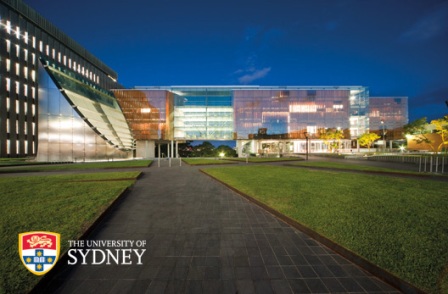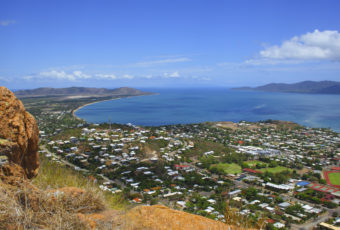Sydney Law School researchers look to protect refugees with disabilities
University of Sydney researchers have gained unprecedented access to refugee populations in six countries to chart disabilities among refugees and prepare recommendations to the United Nations High Commissioner for Refugees.

Professor Mary Crock is coordinating the DFAT-funded initiative, Protection of Refugees with Disabilities, with fellow chief investigators from the Sydney Law School, Emeritus Professor Ron McCallum and Future Fellow, Professor Ben Saul.
The UN Convention on the Rights of Persons with Disabilities (CRPD) acts as a framework for the team’s wide-reaching research. Professor McCallum is a founding member and Chair of the CRPD Committee which oversees this convention.
“We’re using the framework of this new convention to look at the way the UNHCR counts and includes refugees and how they are being treated. As you can imagine, it’s not a happy story,” said Professor Crock.
“Up until now very few people have really thought about persons with disabilities in refugee situations. This seems to be ironic, because you would think that war creates disabilities and so you are likely to get a lot of people in camps with disabilities.
“On the contrary, a lot of people think—and there seems to be this fiction—that refugees only travel if they are ‘whole bodied,’ that people with disabilities don’t make it out so they are just not there.
“In fact, when you ask the UNHCR for their statistics on how many refugees they have on their books or have acknowledged, they give you a tiny percentage relative to what the World Health Organization tells us we ought to expect in any given population,” she added.
The UNHCR is providing extensive support to the University of Sydney on the project, which unpacks the practical and cultural barriers to the protection of disabled refugees in host countries regularly featured in Australia’s refugee and resettlement debate.
The team is also trialling a Disability Identification Tool for displaced populations. If adopted, the tool could serve as a valuable aid to UNHCR and other workers seeking to better identify, assist and protect refugees with disabilities.
“One of the problems with properly identifying people with disabilities in the correct way is that there has been a tendency to rely upon self-reporting or a visual of a person to identify an incapacity that they have,” said the Sydney Law School professor. “But in fact, disability under the Convention is not so much about your incapacity, rather it’s about what barriers exist to allowing you to participate properly in the community.”
The project began in 2012 with fieldwork in Malaysia and Indonesia, followed by a scoping mission to Pakistan where the team was given data on nearly one million refugees. The team recently returned from their largest fieldwork project yet, spending three weeks in Uganda, where they worked with the UNHCR and local disabled persons’ organisations to reach and survey over 1,000 refugees.
The team is finding that people with disabilities are made especially vulnerable by situations of displacement; however, governments and humanitarian assistance providers currently lack the knowledge base to appropriately assess and respond to their material and legal protection needs.
Fieldwork and interviews have yielded stories and visual evidence of extreme poverty, sexual and physical abuse, and torture among disabled refugees. Stigma and discrimination emerged as commonplace.
“Across our six countries, we have a really wide variety of places where refugees interact with UNHCR and with the community wherever they are. We go from urban refugees to asylum seekers who are living very tenuously in the community to countries where they are invisible to the government of the day,” said Professor Crock.
The team, assisted by researcher Laura Smith-Khan, is working closely with the UNHCR by sending the agency detailed reports after each country visit. Next, they will visit Turkey and Jordan, two of the main destination countries for people seeking asylum from the ongoing conflict in Syria.
“I’m hoping that we can follow this up with another project, where we can embed ourselves with UNHCR to do a specific trial with the Disability Identification Tool that we are suggesting they need to adopt,” said Professor Crock.
About Sydney Law School
Sydney Law School is Australia’s first. Since its inception, it has been at the forefront of developments associated with both the teaching and research of law. Its strong sense of commitment to the fundamentals of law is combined with a commitment to innovation and the exploration of issues at the cutting edge.
The Sydney JD comprises the core legal subjects required throughout the world for professional accreditation coupled with the study of a wide range of elective subjects which allows advanced learning in both specialized fields and law in general. Teaching and learning methodology includes a wide range of formats to allow individual choice, a deep understanding of the law, independent research and the development of the skills and ethics inherent in modern professional practice.
To be eligible to apply to the Sydney Law School JD, you must have the following:
- Completed an undergraduate degree;
- Achieved a minimum cumulative grade point average (cGPA) of at least 3.0/4.0
Apply now to Sydney Law School!
*

































Ask A Question
Ask us about your program of interest, or if you have a question about our services.
CONTACT US TODAY